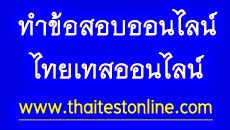แนะนำชุดข้อสอบ
EDUCATION RESEARCH | Test Home
Version Thaitestonline.com | Mobile
เพื่อนบ้านเว็บครูออฟ
1. พุทธประวัติ ป.5
2. แนวข้อสอบกฎหมายปฏิรูปการศึกษาชุดที่ 1/3
3. วิชาสังคมศึกษาม.1 ชุดที่32
4. แนวข้อสอบ O-NET สุขศึกษา ป.6 ชุดที่ 2
Version Thaitestonline.com | Mobile
เพื่อนบ้านเว็บครูออฟ
